[English] 日本語
 Yorodumi
Yorodumi- PDB-3mbw: Crystal structure of the human ephrin A2 LBD and CRD domains in c... -
+ Open data
Open data
- Basic information
Basic information
| Entry | Database: PDB / ID: 3mbw | |||||||||
|---|---|---|---|---|---|---|---|---|---|---|
| Title | Crystal structure of the human ephrin A2 LBD and CRD domains in complex with ephrin A1 | |||||||||
 Components Components |
| |||||||||
 Keywords Keywords | TRANSFERASE/SIGNALING PROTEIN / ATP-binding /  kinase / nucleotide-binding / kinase / nucleotide-binding /  receptor / receptor /  transferase / transferase /  phosphorylation / phosphorylation /  transmembrane / tyrosine-protein kinase / transmembrane / tyrosine-protein kinase /  glycoprotein / cysteine-rich domain / glycoprotein / cysteine-rich domain /  phosphoprotein / phosphoprotein /  GPI-anchor / GPI-anchor /  lipoprotein / transferase-signaling protein complex / lipoprotein / transferase-signaling protein complex /  Structural Genomics Consortium / SGC Structural Genomics Consortium / SGC | |||||||||
| Function / homology |  Function and homology information Function and homology informationendocardial cushion to mesenchymal transition involved in heart valve formation / negative regulation of proteolysis involved in protein catabolic process / negative regulation of dendritic spine morphogenesis / positive regulation of aspartic-type endopeptidase activity involved in amyloid precursor protein catabolic process / notochord cell development / mitral valve morphogenesis / notochord formation / lens fiber cell morphogenesis / blood vessel endothelial cell proliferation involved in sprouting angiogenesis / negative regulation of lymphangiogenesis ...endocardial cushion to mesenchymal transition involved in heart valve formation / negative regulation of proteolysis involved in protein catabolic process / negative regulation of dendritic spine morphogenesis / positive regulation of aspartic-type endopeptidase activity involved in amyloid precursor protein catabolic process / notochord cell development / mitral valve morphogenesis / notochord formation / lens fiber cell morphogenesis / blood vessel endothelial cell proliferation involved in sprouting angiogenesis / negative regulation of lymphangiogenesis / axial mesoderm formation / pericyte cell differentiation / cAMP metabolic process / positive regulation of bicellular tight junction assembly / regulation of blood vessel endothelial cell migration / negative regulation of chemokine production /  ephrin receptor activity / negative regulation of epithelial to mesenchymal transition / leading edge membrane / ephrin receptor activity / negative regulation of epithelial to mesenchymal transition / leading edge membrane /  bone remodeling / post-anal tail morphogenesis / response to growth factor / activation of GTPase activity / negative regulation of thymocyte apoptotic process / bone remodeling / post-anal tail morphogenesis / response to growth factor / activation of GTPase activity / negative regulation of thymocyte apoptotic process /  regulation of lamellipodium assembly / aortic valve morphogenesis / regulation of lamellipodium assembly / aortic valve morphogenesis /  tight junction / branching involved in mammary gland duct morphogenesis / EPH-Ephrin signaling / neural tube development / RND1 GTPase cycle / RND2 GTPase cycle / RND3 GTPase cycle / mammary gland epithelial cell proliferation / RHOV GTPase cycle / tight junction / branching involved in mammary gland duct morphogenesis / EPH-Ephrin signaling / neural tube development / RND1 GTPase cycle / RND2 GTPase cycle / RND3 GTPase cycle / mammary gland epithelial cell proliferation / RHOV GTPase cycle /  regulation of axonogenesis / positive regulation of amyloid-beta formation / EPHA-mediated growth cone collapse / negative regulation of MAPK cascade / regulation of axonogenesis / positive regulation of amyloid-beta formation / EPHA-mediated growth cone collapse / negative regulation of MAPK cascade /  growth factor binding / regulation of cell adhesion mediated by integrin / lamellipodium membrane / RHOU GTPase cycle / RHOG GTPase cycle / EPH-ephrin mediated repulsion of cells / negative regulation of phosphatidylinositol 3-kinase/protein kinase B signal transduction / ephrin receptor signaling pathway / RAC2 GTPase cycle / RAC3 GTPase cycle / growth factor binding / regulation of cell adhesion mediated by integrin / lamellipodium membrane / RHOU GTPase cycle / RHOG GTPase cycle / EPH-ephrin mediated repulsion of cells / negative regulation of phosphatidylinositol 3-kinase/protein kinase B signal transduction / ephrin receptor signaling pathway / RAC2 GTPase cycle / RAC3 GTPase cycle /  vasculogenesis / positive regulation of protein tyrosine kinase activity / vasculogenesis / positive regulation of protein tyrosine kinase activity /  regulation of angiogenesis / side of membrane / regulation of peptidyl-tyrosine phosphorylation / keratinocyte differentiation / RAC1 GTPase cycle / regulation of angiogenesis / side of membrane / regulation of peptidyl-tyrosine phosphorylation / keratinocyte differentiation / RAC1 GTPase cycle /  transmembrane receptor protein tyrosine kinase activity / transmembrane receptor protein tyrosine kinase activity /  ephrin receptor binding / cell chemotaxis / negative regulation of angiogenesis / substrate adhesion-dependent cell spreading / osteoclast differentiation / regulation of ERK1 and ERK2 cascade / phosphatidylinositol 3-kinase/protein kinase B signal transduction / ephrin receptor binding / cell chemotaxis / negative regulation of angiogenesis / substrate adhesion-dependent cell spreading / osteoclast differentiation / regulation of ERK1 and ERK2 cascade / phosphatidylinositol 3-kinase/protein kinase B signal transduction /  skeletal system development / molecular function activator activity / skeletal system development / molecular function activator activity /  cell motility / cell motility /  axon guidance / protein localization to plasma membrane / positive regulation of protein localization to plasma membrane / axon guidance / protein localization to plasma membrane / positive regulation of protein localization to plasma membrane /  receptor protein-tyrosine kinase / neuron differentiation / ruffle membrane / osteoblast differentiation / receptor protein-tyrosine kinase / neuron differentiation / ruffle membrane / osteoblast differentiation /  cell surface receptor protein tyrosine kinase signaling pathway / intrinsic apoptotic signaling pathway in response to DNA damage / cell surface receptor protein tyrosine kinase signaling pathway / intrinsic apoptotic signaling pathway in response to DNA damage /  cell migration / positive regulation of peptidyl-tyrosine phosphorylation / virus receptor activity / cell-cell signaling / cell migration / positive regulation of peptidyl-tyrosine phosphorylation / virus receptor activity / cell-cell signaling /  lamellipodium / lamellipodium /  angiogenesis / positive regulation of MAPK cascade / protein stabilization / angiogenesis / positive regulation of MAPK cascade / protein stabilization /  receptor complex / receptor complex /  cell adhesion / positive regulation of cell migration / defense response to Gram-positive bacterium / cell adhesion / positive regulation of cell migration / defense response to Gram-positive bacterium /  cadherin binding / cadherin binding /  inflammatory response / positive regulation of protein phosphorylation / inflammatory response / positive regulation of protein phosphorylation /  phosphorylation / phosphorylation /  signaling receptor binding / signaling receptor binding /  focal adhesion / negative regulation of transcription by RNA polymerase II / focal adhesion / negative regulation of transcription by RNA polymerase II /  cell surface / extracellular region / cell surface / extracellular region /  ATP binding / ATP binding /  plasma membrane plasma membraneSimilarity search - Function | |||||||||
| Biological species |   Homo sapiens (human) Homo sapiens (human) | |||||||||
| Method |  X-RAY DIFFRACTION / X-RAY DIFFRACTION /  SYNCHROTRON / SYNCHROTRON /  MOLECULAR REPLACEMENT / Resolution: 2.81 Å MOLECULAR REPLACEMENT / Resolution: 2.81 Å | |||||||||
 Authors Authors | Walker, J.R. / Yermekbayeva, L. / Seitova, A. / Butler-Cole, C. / Bountra, C. / Weigelt, J. / Arrowsmith, C.H. / Edwards, A.M. / Bochkarev, A. / Dhe-Paganon, S. / Structural Genomics Consortium (SGC) | |||||||||
 Citation Citation |  Journal: Proc.Natl.Acad.Sci.USA / Year: 2010 Journal: Proc.Natl.Acad.Sci.USA / Year: 2010Title: Architecture of Eph receptor clusters. Authors: Himanen, J.P. / Yermekbayeva, L. / Janes, P.W. / Walker, J.R. / Xu, K. / Atapattu, L. / Rajashankar, K.R. / Mensinga, A. / Lackmann, M. / Nikolov, D.B. / Dhe-Paganon, S. | |||||||||
| History |
|
- Structure visualization
Structure visualization
| Structure viewer | Molecule:  Molmil Molmil Jmol/JSmol Jmol/JSmol |
|---|
- Downloads & links
Downloads & links
- Download
Download
| PDBx/mmCIF format |  3mbw.cif.gz 3mbw.cif.gz | 188.1 KB | Display |  PDBx/mmCIF format PDBx/mmCIF format |
|---|---|---|---|---|
| PDB format |  pdb3mbw.ent.gz pdb3mbw.ent.gz | 147.7 KB | Display |  PDB format PDB format |
| PDBx/mmJSON format |  3mbw.json.gz 3mbw.json.gz | Tree view |  PDBx/mmJSON format PDBx/mmJSON format | |
| Others |  Other downloads Other downloads |
-Validation report
| Arichive directory |  https://data.pdbj.org/pub/pdb/validation_reports/mb/3mbw https://data.pdbj.org/pub/pdb/validation_reports/mb/3mbw ftp://data.pdbj.org/pub/pdb/validation_reports/mb/3mbw ftp://data.pdbj.org/pub/pdb/validation_reports/mb/3mbw | HTTPS FTP |
|---|
-Related structure data
| Related structure data |  3c8xSC  3czuC 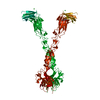 3fl7C 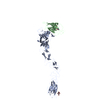 3mx0C  1shwS C: citing same article ( S: Starting model for refinement |
|---|---|
| Similar structure data |
- Links
Links
- Assembly
Assembly
| Deposited unit | 
| ||||||||
|---|---|---|---|---|---|---|---|---|---|
| 1 | 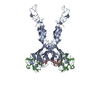
| ||||||||
| Unit cell |
|
- Components
Components
| #1: Protein | Mass: 36587.008 Da / Num. of mol.: 1 / Fragment: RESIDUES 23-326 Source method: isolated from a genetically manipulated source Source: (gene. exp.)   Homo sapiens (human) / Gene: ECK, EPHA2 / Plasmid: PFHMSP-LIC-N / Production host: Homo sapiens (human) / Gene: ECK, EPHA2 / Plasmid: PFHMSP-LIC-N / Production host:   Spodoptera frugiperda (fall armyworm) / Strain (production host): SF9 Spodoptera frugiperda (fall armyworm) / Strain (production host): SF9References: UniProt: P29317,  receptor protein-tyrosine kinase receptor protein-tyrosine kinase |
|---|---|
| #2: Protein |  Ephrin A1 / EPH-related receptor tyrosine kinase ligand 1 / LERK-1 / Immediate early response protein B61 / ...EPH-related receptor tyrosine kinase ligand 1 / LERK-1 / Immediate early response protein B61 / Tumor necrosis factor alpha-induced protein 4 / TNF alpha-induced protein 4 / Ephrin-A1 / secreted form Ephrin A1 / EPH-related receptor tyrosine kinase ligand 1 / LERK-1 / Immediate early response protein B61 / ...EPH-related receptor tyrosine kinase ligand 1 / LERK-1 / Immediate early response protein B61 / Tumor necrosis factor alpha-induced protein 4 / TNF alpha-induced protein 4 / Ephrin-A1 / secreted formMass: 21398.688 Da / Num. of mol.: 1 / Fragment: RESIDUES 17-171 Source method: isolated from a genetically manipulated source Source: (gene. exp.)   Homo sapiens (human) / Gene: EFNA1, EPLG1, LERK1, TNFAIP4 / Plasmid: PFHMSP-LIC-N / Production host: Homo sapiens (human) / Gene: EFNA1, EPLG1, LERK1, TNFAIP4 / Plasmid: PFHMSP-LIC-N / Production host:   Spodoptera frugiperda (fall armyworm) / Strain (production host): SF9 / References: UniProt: P20827 Spodoptera frugiperda (fall armyworm) / Strain (production host): SF9 / References: UniProt: P20827 |
| #3: Polysaccharide | alpha-D-mannopyranose-(1-3)-beta-D-mannopyranose-(1-4)-2-acetamido-2-deoxy-beta-D-glucopyranose-(1- ...alpha-D-mannopyranose-(1-3)-beta-D-mannopyranose-(1-4)-2-acetamido-2-deoxy-beta-D-glucopyranose-(1-4)-2-acetamido-2-deoxy-beta-D-glucopyranose / Mass: 748.682 Da / Num. of mol.: 1 / Mass: 748.682 Da / Num. of mol.: 1Source method: isolated from a genetically manipulated source |
| #4: Chemical | ChemComp-UNX / |
| #5: Water | ChemComp-HOH /  Water Water |
| Sequence details | STATE THAT THE CORRECT SEQUENCE IS PROVIDED IN GENBANK ENTRY NP_004422 |
-Experimental details
-Experiment
| Experiment | Method:  X-RAY DIFFRACTION / Number of used crystals: 1 X-RAY DIFFRACTION / Number of used crystals: 1 |
|---|
- Sample preparation
Sample preparation
| Crystal | Density Matthews: 2.91 Å3/Da / Density % sol: 57.73 % |
|---|---|
Crystal grow | Temperature: 290.9 K / pH: 8 Details: 10.0% PEG 3350, 0.16M AMMONIUM PHOSPHATE, pH 8.0, VAPOR DIFFUSION, HANGING DROP, temperature 290.9K |
-Data collection
| Diffraction | Mean temperature: 100 K |
|---|---|
| Diffraction source | Source:  SYNCHROTRON / Site: SYNCHROTRON / Site:  APS APS  / Beamline: 19-ID / Wavelength: 0.98792 / Beamline: 19-ID / Wavelength: 0.98792 |
| Detector | Type: ADSC QUANTUM 315 / Detector: CCD / Date: Mar 10, 2008 |
| Radiation | Monochromator: DOUBLE-CRYSTAL SI-111 / Protocol: SINGLE WAVELENGTH / Monochromatic (M) / Laue (L): M / Scattering type: x-ray |
| Radiation wavelength | Wavelength : 0.98792 Å / Relative weight: 1 : 0.98792 Å / Relative weight: 1 |
| Reflection | Resolution: 2.8→39 Å / Num. obs: 16953 / % possible obs: 99.7 % / Observed criterion σ(I): -3 / Redundancy: 5.3 % / Biso Wilson estimate: 83.52 Å2 / Rsym value: 0.066 / Net I/σ(I): 23.65 |
| Reflection shell | Resolution: 2.8→2.85 Å / Redundancy: 5.3 % / Mean I/σ(I) obs: 2.17 / Rsym value: 0.668 / % possible all: 100 |
- Processing
Processing
| Software |
| ||||||||||||||||||||||||||||||||||||||||||||||||||||||||||||||||||||||||||||||||||||||||||||||||||||||||||||||||||||||||||||||||||||||||||||||||||||||||||||||||||||||||||||||||||||||||||||||||||||||||||||||||||||||||||||||||||||||||||||||||||||||||||
|---|---|---|---|---|---|---|---|---|---|---|---|---|---|---|---|---|---|---|---|---|---|---|---|---|---|---|---|---|---|---|---|---|---|---|---|---|---|---|---|---|---|---|---|---|---|---|---|---|---|---|---|---|---|---|---|---|---|---|---|---|---|---|---|---|---|---|---|---|---|---|---|---|---|---|---|---|---|---|---|---|---|---|---|---|---|---|---|---|---|---|---|---|---|---|---|---|---|---|---|---|---|---|---|---|---|---|---|---|---|---|---|---|---|---|---|---|---|---|---|---|---|---|---|---|---|---|---|---|---|---|---|---|---|---|---|---|---|---|---|---|---|---|---|---|---|---|---|---|---|---|---|---|---|---|---|---|---|---|---|---|---|---|---|---|---|---|---|---|---|---|---|---|---|---|---|---|---|---|---|---|---|---|---|---|---|---|---|---|---|---|---|---|---|---|---|---|---|---|---|---|---|---|---|---|---|---|---|---|---|---|---|---|---|---|---|---|---|---|---|---|---|---|---|---|---|---|---|---|---|---|---|---|---|---|---|---|---|---|---|---|---|---|---|---|---|---|---|---|---|---|---|
| Refinement | Method to determine structure : :  MOLECULAR REPLACEMENT MOLECULAR REPLACEMENTStarting model: PDB ENTRIES 3C8X, 1SHW Resolution: 2.81→34.1 Å / Cor.coef. Fo:Fc: 0.9127 / Cor.coef. Fo:Fc free: 0.8839 / Cross valid method: THROUGHOUT / σ(F): 0
| ||||||||||||||||||||||||||||||||||||||||||||||||||||||||||||||||||||||||||||||||||||||||||||||||||||||||||||||||||||||||||||||||||||||||||||||||||||||||||||||||||||||||||||||||||||||||||||||||||||||||||||||||||||||||||||||||||||||||||||||||||||||||||
| Displacement parameters | Biso mean: 80.12 Å2
| ||||||||||||||||||||||||||||||||||||||||||||||||||||||||||||||||||||||||||||||||||||||||||||||||||||||||||||||||||||||||||||||||||||||||||||||||||||||||||||||||||||||||||||||||||||||||||||||||||||||||||||||||||||||||||||||||||||||||||||||||||||||||||
| Refine analyze | Luzzati coordinate error obs: 0.551 Å | ||||||||||||||||||||||||||||||||||||||||||||||||||||||||||||||||||||||||||||||||||||||||||||||||||||||||||||||||||||||||||||||||||||||||||||||||||||||||||||||||||||||||||||||||||||||||||||||||||||||||||||||||||||||||||||||||||||||||||||||||||||||||||
| Refinement step | Cycle: LAST / Resolution: 2.81→34.1 Å
| ||||||||||||||||||||||||||||||||||||||||||||||||||||||||||||||||||||||||||||||||||||||||||||||||||||||||||||||||||||||||||||||||||||||||||||||||||||||||||||||||||||||||||||||||||||||||||||||||||||||||||||||||||||||||||||||||||||||||||||||||||||||||||
| Refine LS restraints |
| ||||||||||||||||||||||||||||||||||||||||||||||||||||||||||||||||||||||||||||||||||||||||||||||||||||||||||||||||||||||||||||||||||||||||||||||||||||||||||||||||||||||||||||||||||||||||||||||||||||||||||||||||||||||||||||||||||||||||||||||||||||||||||
| LS refinement shell | Resolution: 2.81→3 Å / Total num. of bins used: 8
| ||||||||||||||||||||||||||||||||||||||||||||||||||||||||||||||||||||||||||||||||||||||||||||||||||||||||||||||||||||||||||||||||||||||||||||||||||||||||||||||||||||||||||||||||||||||||||||||||||||||||||||||||||||||||||||||||||||||||||||||||||||||||||
| Refinement TLS params. | Method: refined / Refine-ID: X-RAY DIFFRACTION
| ||||||||||||||||||||||||||||||||||||||||||||||||||||||||||||||||||||||||||||||||||||||||||||||||||||||||||||||||||||||||||||||||||||||||||||||||||||||||||||||||||||||||||||||||||||||||||||||||||||||||||||||||||||||||||||||||||||||||||||||||||||||||||
| Refinement TLS group |
|
 Movie
Movie Controller
Controller


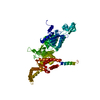
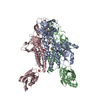



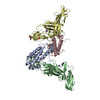
 PDBj
PDBj














